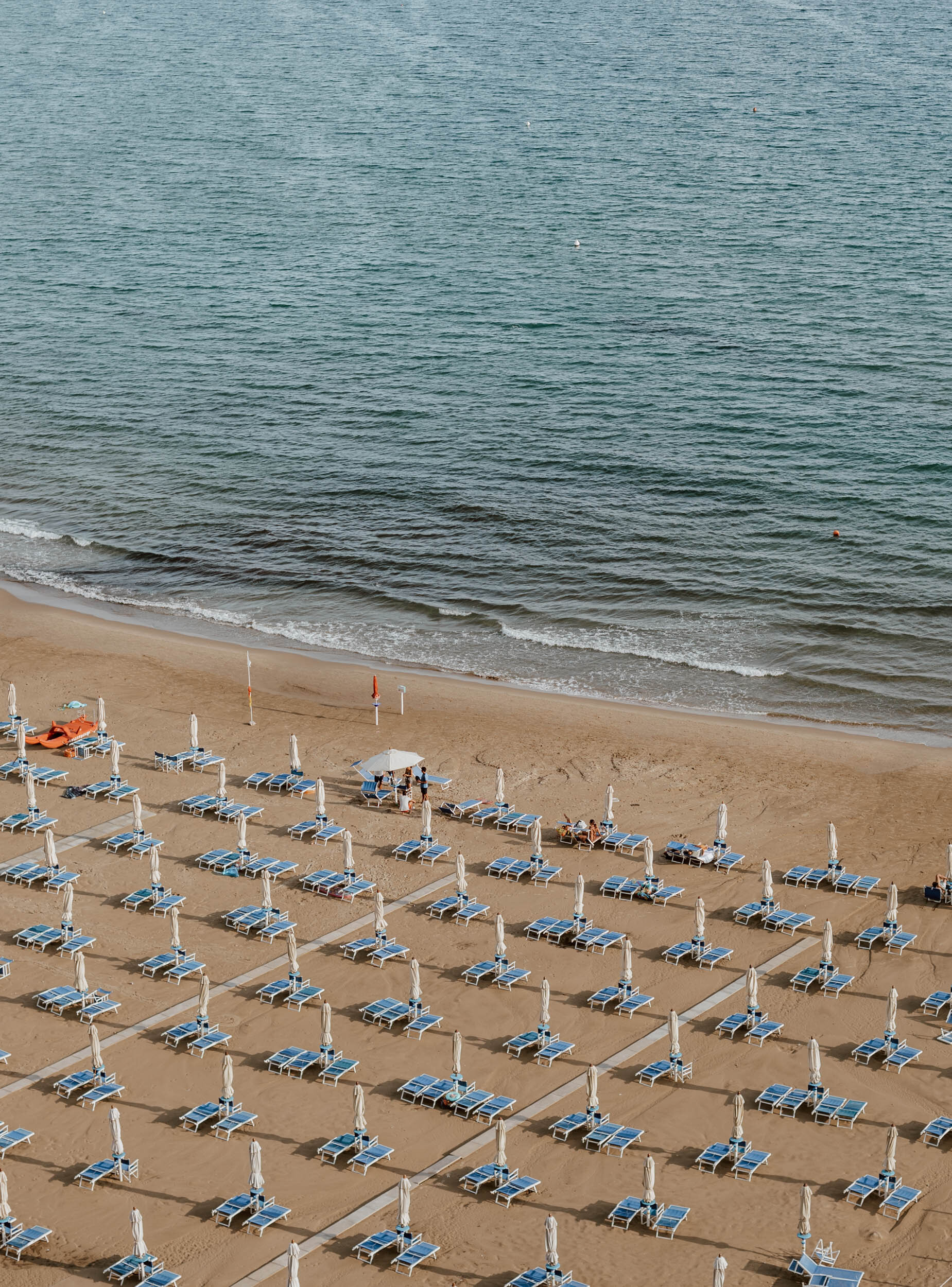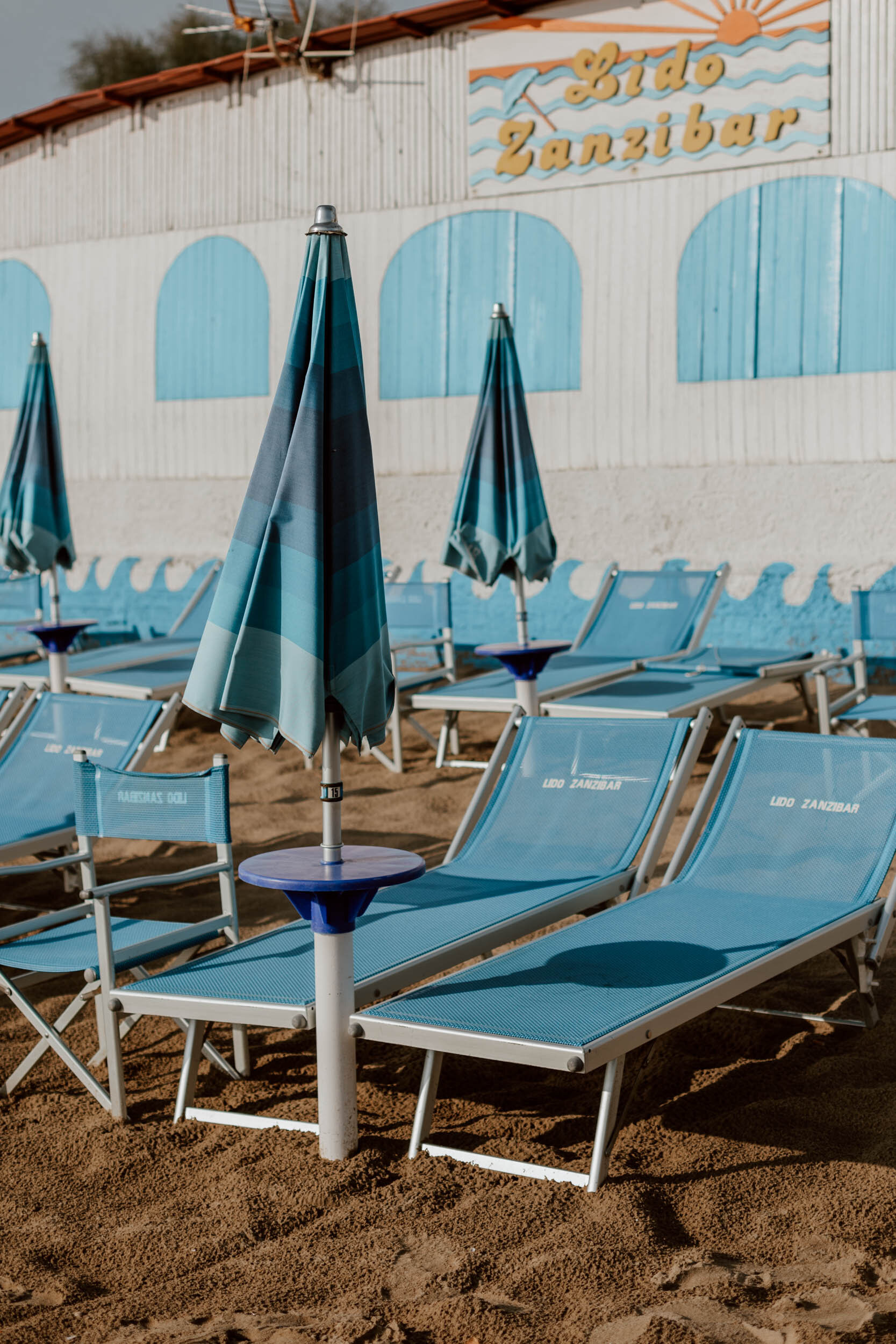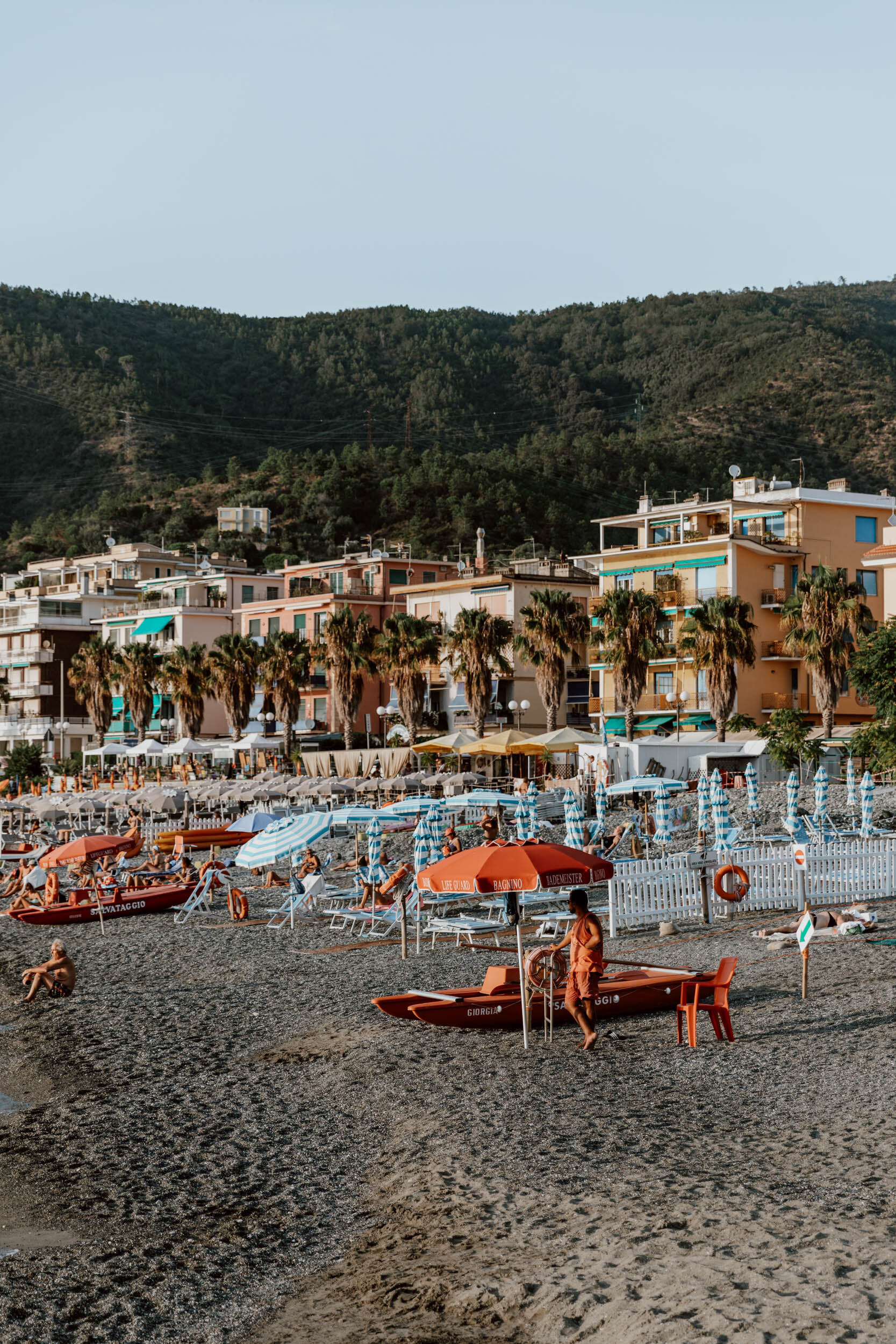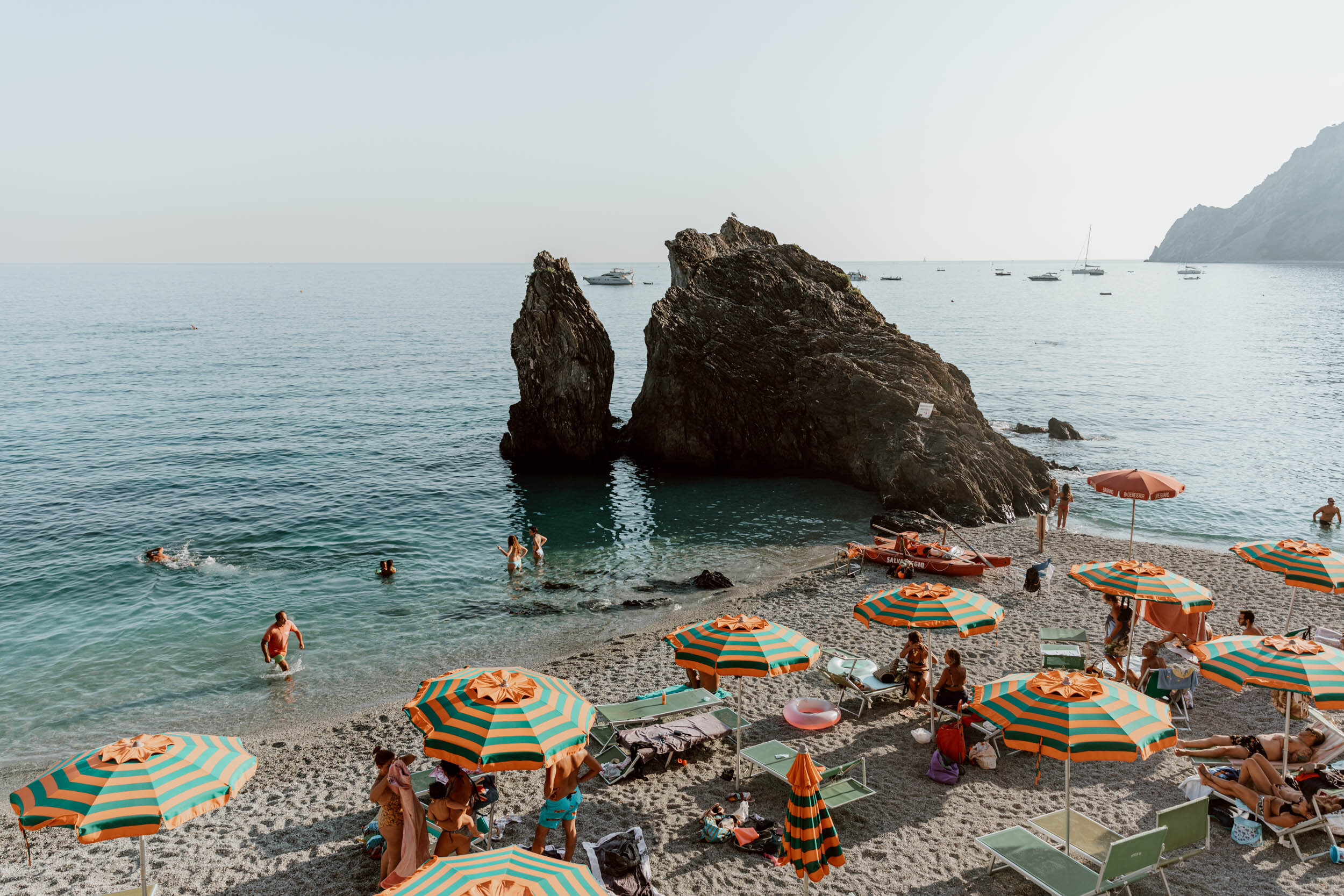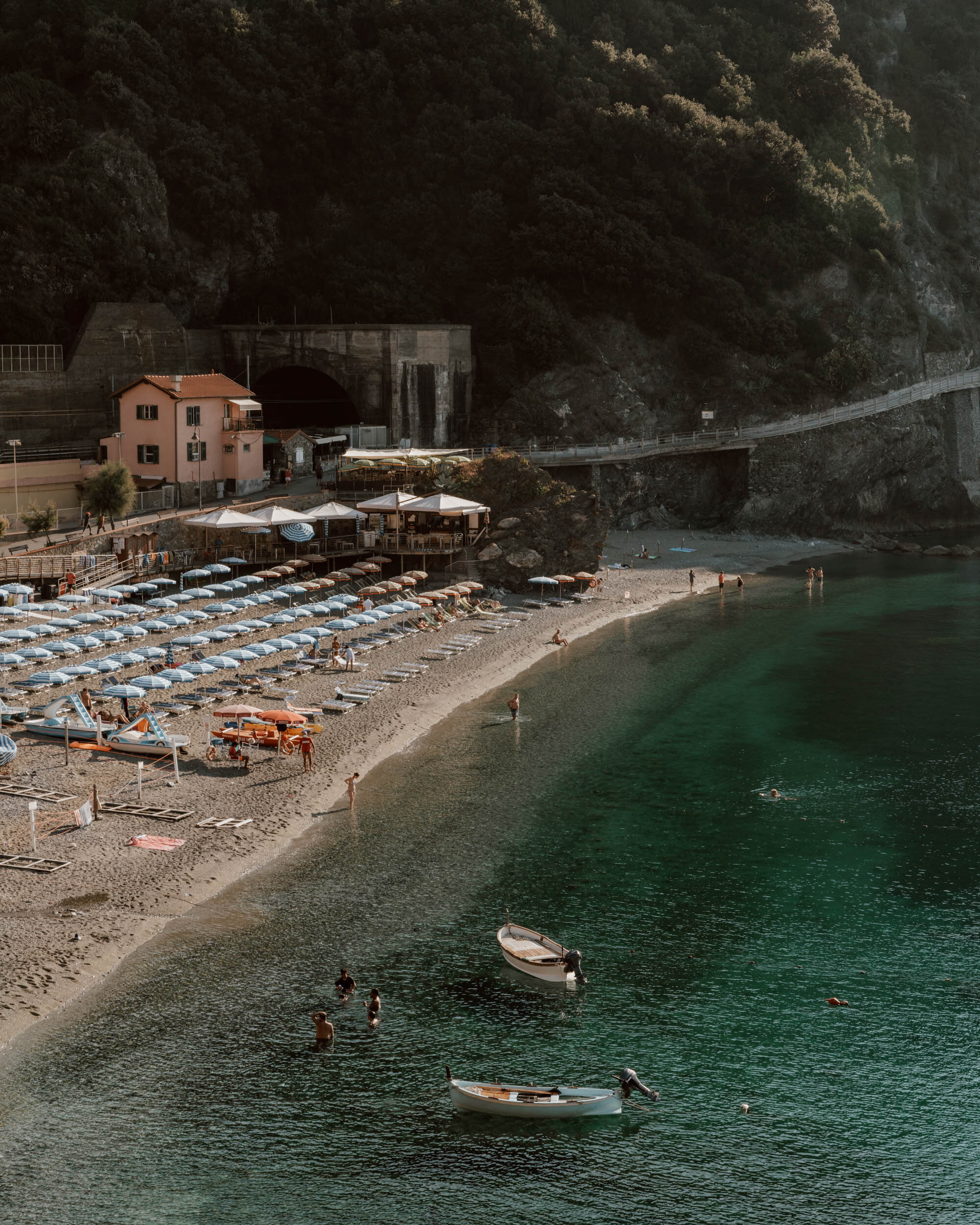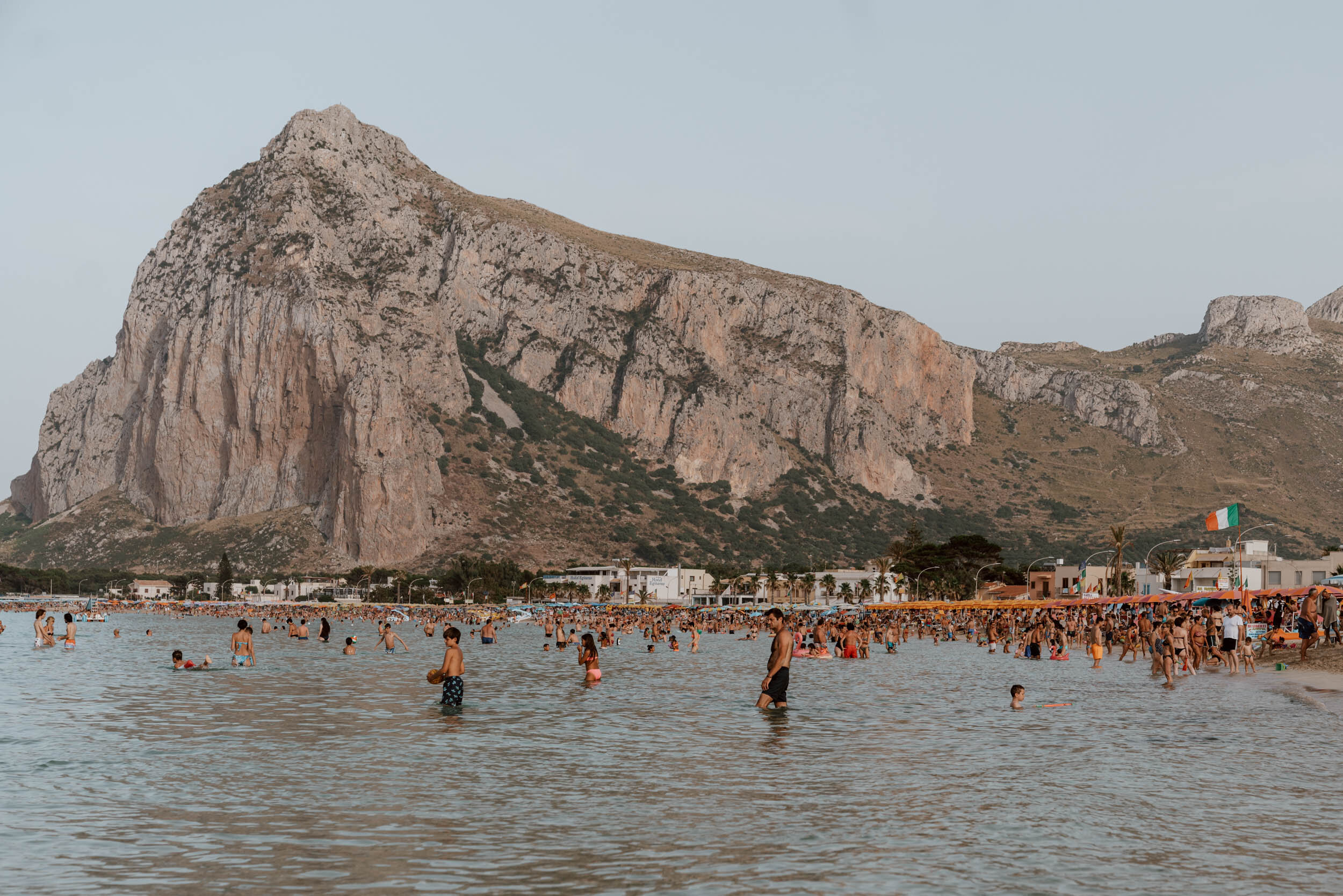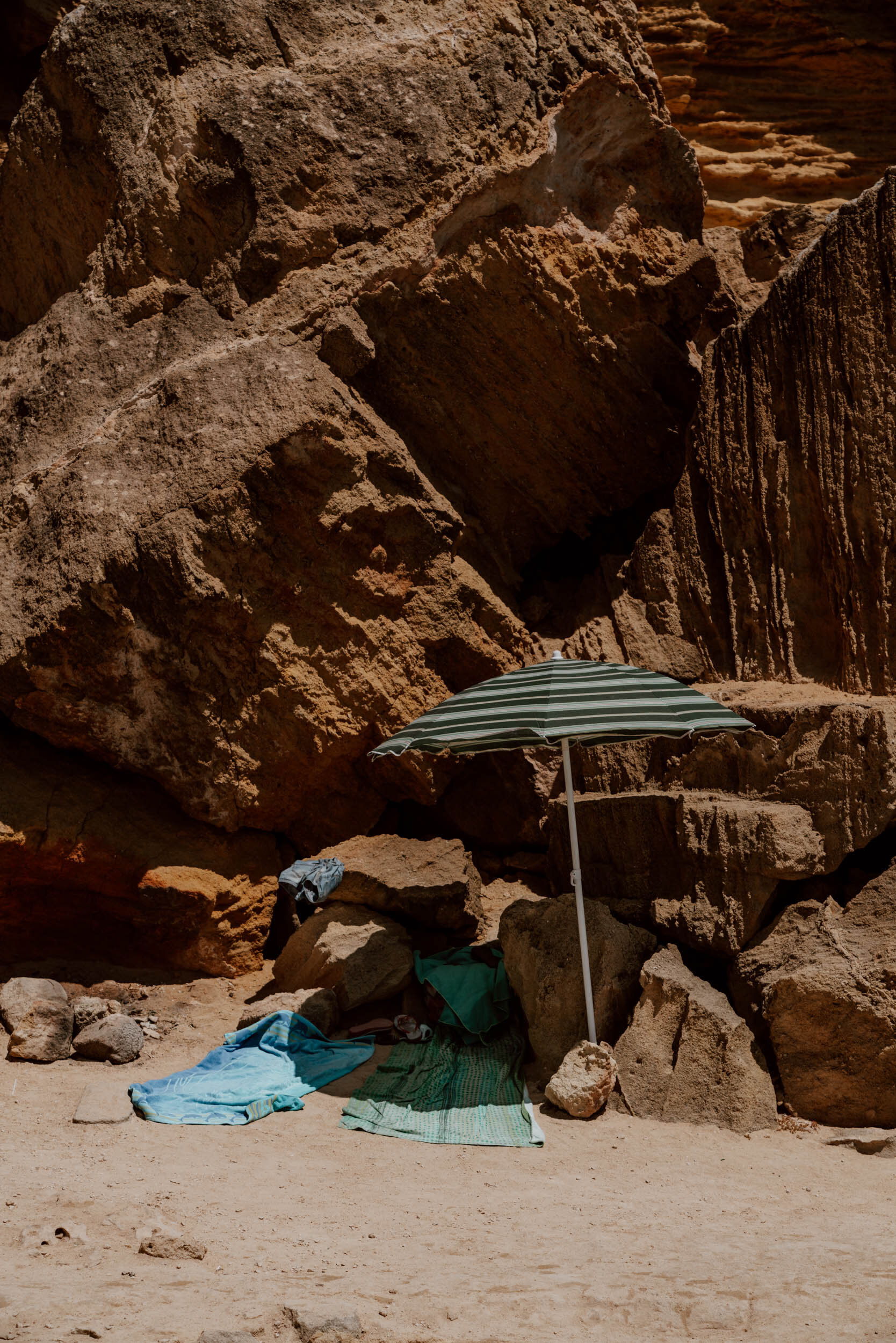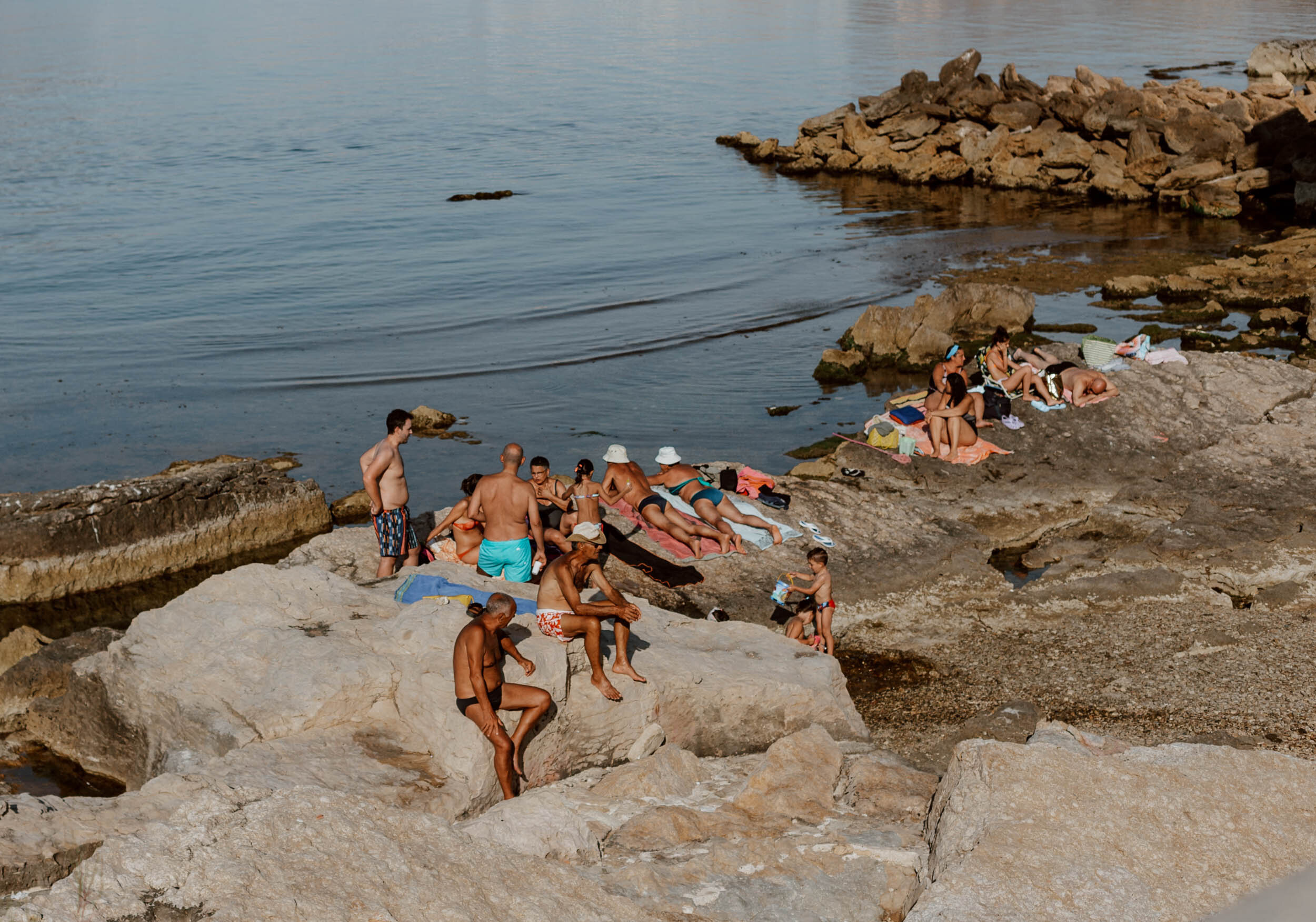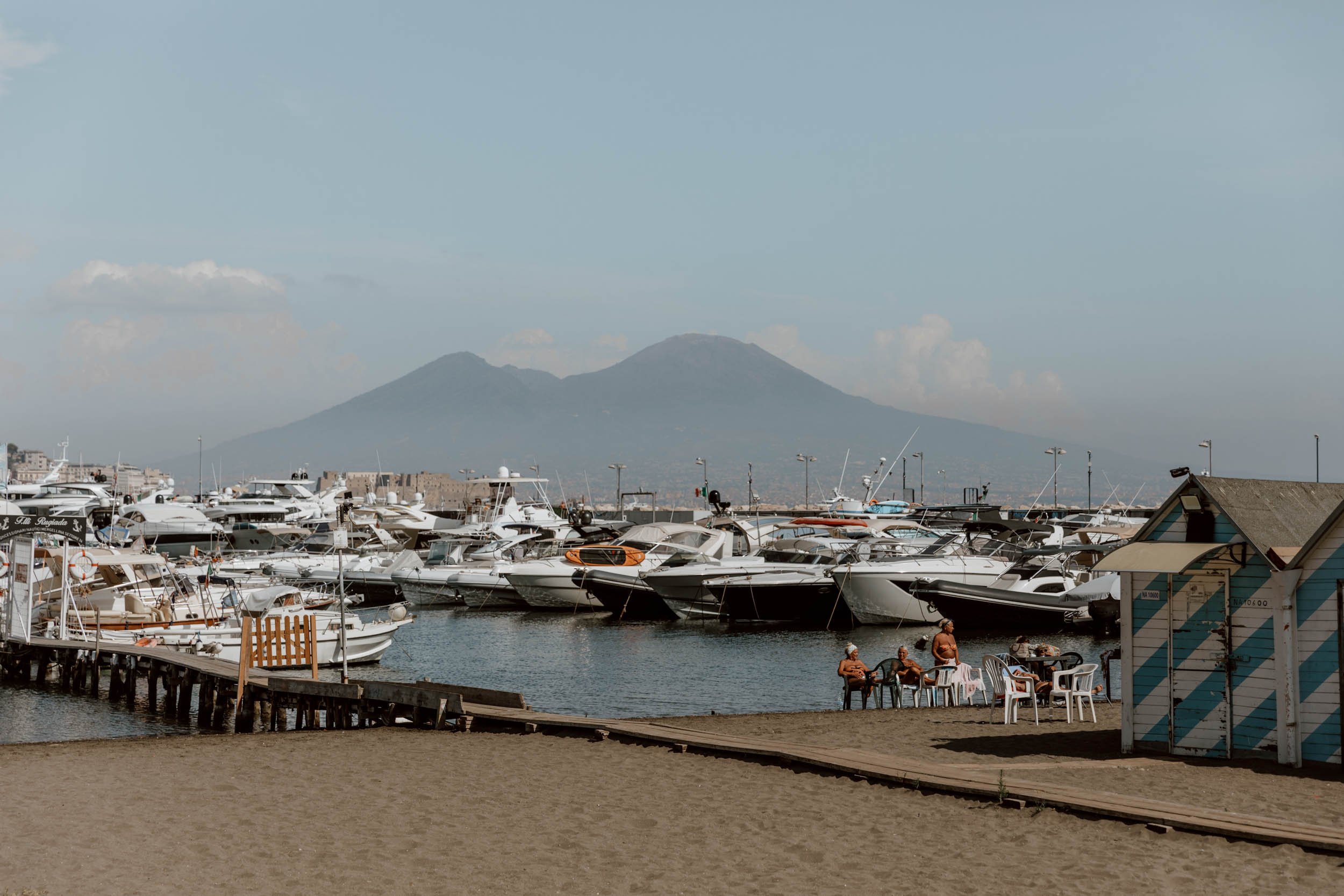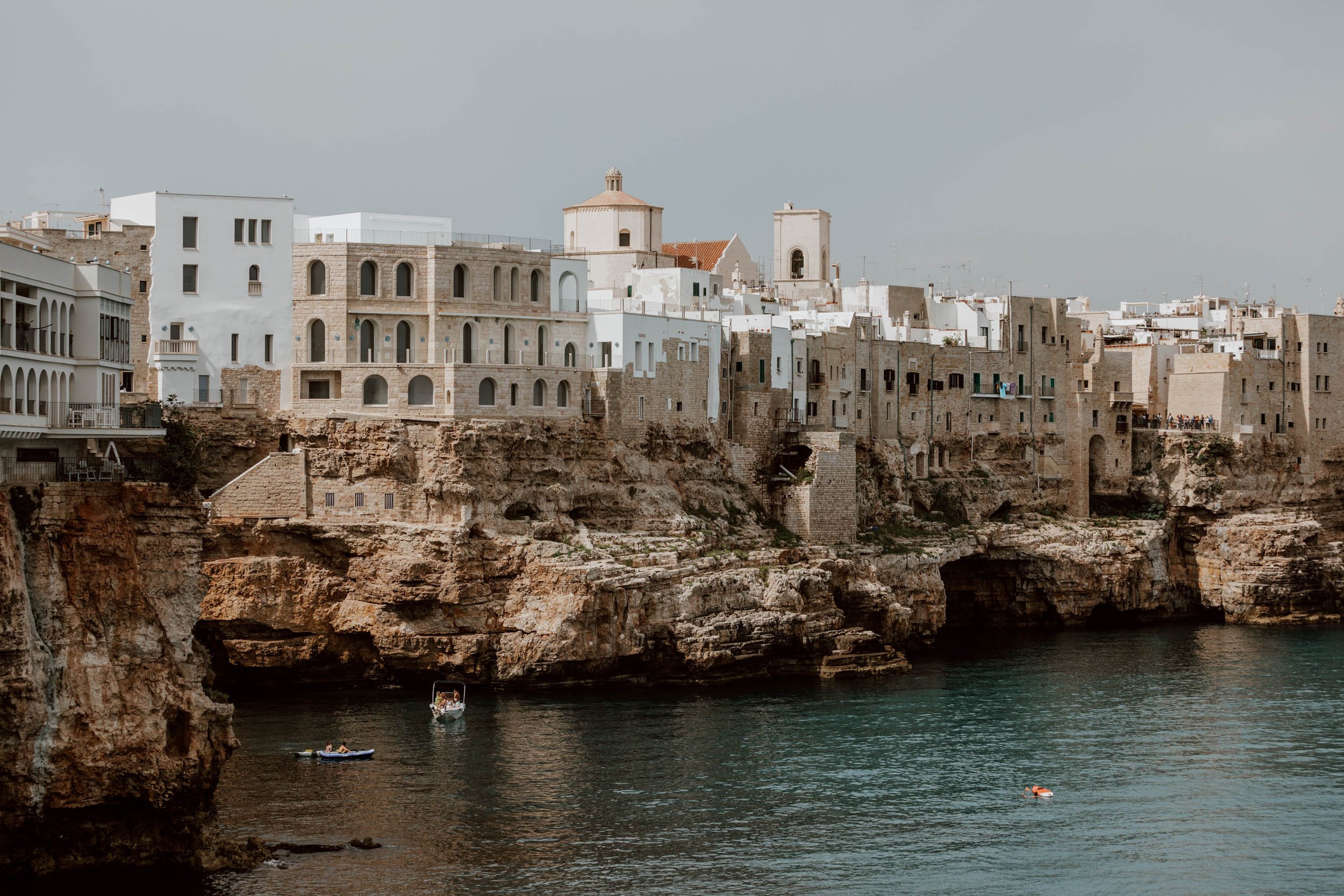Confused about how beach clubs in Italy work? This article has all the answers.
Updated November 2023
As Brits, beaches on European holidays have usually denoted a wide stretch of golden sand upon which you lay a towel down for free and hang out for the day (sunburn optional).
And then we started to fall in love with Italy.
If you're more accustomed to summer holidays in Spain or France, then you may be thinking we're over-egging it a little bit to make an article entirely focussed on beach clubs in Italy. After all, how complicated can a day at the beach on the Amalfi Coast, Sicily, Cinque Terre, or Puglia be?
Well, up until 2017, we would have agreed with you.
On that first road trip in Puglia, we drove all around Italy's heel in search of its best beaches. Unfortunately, it quickly transpired that simply typing spiaggia into Google Maps will bring up a plethora of red markers, but fail to mention that you can't simply park up and freely head to every stretch of sand.
For in Italy there is one crucial cultural detail, and that is the Italian lido.
Over the last few summers travelling there, we've gone through the necessary stages of appreciating the good and the bad of these private beach clubs which are everywhere: confusion, annoyance, avoidance, reluctant participation, and finally, in summer 2020, fully fledged appreciation.
And that's before we talk about how bloody beautiful their parasols are.
If it's your first summer in Italy, or you've never travelled its nearly 5,000 mile coastline before, then understanding what these are and how they operate in advance will save you a good deal of shock, befuddlement, and irritation.
This is the essential guide to the art of the Italian lido.
Is That Beach Private?
The reason why a day at the beach in Italy isn't as straightforward as it should be stems from the fact that the majority of beaches in the country are private.
Sort of.
The government actually owns all the beach land, but more than 30,000 businesses rent and effectively own large sections of any beach in Italy during the summer months.
These 'concessions', usually private family businesses, occupy over 90 percent of the coast and the fee paid by a balneare (roughly translated as beach manager) is largely viewed to be wildly out of sync with the profits available to some of them.
The seafront still belongs to the public, and a Supreme Court ruling a decade ago declared that access to the sea could not be impeded by private property or business - but in reality that simply means that public access points are required. So, although access to every beach is for all the public, that does not make the whole beach 'public'.
In short, a beach in Italy is big business for various people, and it's effectively a regulated industry. Indeed, it was estimated that beach concessions turnedover about €15 billion in 2016.
That's a lot of deckchairs and parasols.
Things could be different, but tradition and time conspired to the complicated situation where most of a beach* in Italy is dominated by one or many private businesses, effectively a beach club which you have to pay to access, with smaller, sparse sections allocated as 'spiaggia librera' or free beach for the public.
* It’s important to note that every single beach in Italy has a beach club, but those of any significant length or popularity are very likely to have at least one.
What's a Private Beach Club in Italy?
Many of you will be familiar with pictures of rows of tightly packed sun-loungers paired with bright, colourful umbrellas, all laid out with hypnotically perfect precision and repetition. Such a scene is as iconic an emblem of Italy to us as pizza, pasta, and Vespas, particularly for famous holiday destinations like Cinque Terre, the Amalfi Coast, and Rimini.
It's the Byzantine beach system we have to thank for that though.
Private beach clubs in Italy, called a 'lido', 'bagno', or ‘stabilimenti balneari’, come in various shapes, styles and standards, but all subscribe to that particular aesthetic of matching sun-lounger (lettini) and ombrellone (parasol). You have to pay an entrance fee to access them and their facilities, which usually includes the rental of your own lounger and umbrella for the day.
They are not resorts, although some may be quite similar in terms of what they offer, and are rarely attached to a hotel. Some will be quite basic and focused on families, whilst others may be focused on luxury clientele or younger groups, and others will simply cater to everyone who wants a day at the beach and is happy to pay for it.
An intrinsic, integral part of Italian beach culture and etiquette, their obsession with packing as many chairs into tight rows and lines has little to do with aesthetics and everything to do with maximising the space available within their concession area for guests, thereby increasing the profit available per square metre. Indeed, although the image of a lido is guaranteed to inspire a yearning for a long summer day in Italy, the reality is that too many of them competing on a beach can create an overdeveloped, overcrowded, overpriced experience. Obviously, this system also drives up the cost of an Italian beach holiday for locals and tourists alike.
They are not however without their benefits and their charms.
What To Expect At A beach club in Italy
Besides the browning bodies of bikini-clad grannies or lotharios in budgie smugglers, this is what you need to know about the set up before your first time.
Entry & Costs
Entrance is based on the equipment and space you're effectively renting for the day. The most common is a fixed charge for two deckbeds and an umbrella, whilst others may on the basis of one bed and an umbrella. It's rare that you pay an entrance fee per person (we've only experienced it once).
If you're a family or larger group, you will be charged in addition per additional chair or parasol, which is why you will often see families sharing two beds and a single umbrella.
Rates vary considerably according to the day, the beach, where you sit, the region, the season, clientele, and the quality of the lido. It's most expensive during the peak holiday months of July and August, with weekends in those months being the priciest time to visit.
The price list will be on a sign outside or at the entrance desk, where you also pay. As an indicator, we paid €25 for two beds and an umbrella at three mid-level lidos along the Ligurian Coast in September 2020, but €35 for a fancier lido in Sicily in July. For more exclusive lidos you can expect to pay anything from €30 to €50.
You have to factor in where you're going to sit at some lidos, with the chairs in first few rows (prima fila) from the sea the most in demand and attracting a higher rate. If you want to save a little bit, then opt for those exact same deckchairs further back.
ltalians often buy season passes or memberships to a specific lido, and this private beach club set up obviously makes a lot of sense for them if they live by the sea or summer one place for a few weeks each year (a bathing hut for the whole season, shared by six people, at a lido we visited in Aci Costello, Sicily cost €2,100). However, this clearly isn't going to be an option for most travellers who are only stopping for a day or two. If you're planning on being based in one seaside location for a week though, it's worth finding out a weekly pass/rate is available to save a few euro.
Also, if you arrive at the lido after 1 or 2 pm, you should ask about mezza giornata (half day) rates, especially if it isn't full. Some places will have this specified, whilst others won't offer it at all...we have however been able to negotiate a lower price than the full day rate on a couple of occasions.
It's always a good idea to have cash for paying entry at smaller or less fancy lidos.
Facilities & Amenities at beach clubs
Save for the most basic of basic, you can expect all lidos to have toilets, showers, small changing rooms, and a bar/cafe selling drinks and simple food (pizzas, simple pastas, salad, sandwiches, snacks). Some lidos will however have a full-on public restaurant attached serving absolutely fantastic lunches and a bustling bar area.
There may also be games / play areas for kids or beach equipment you can use.
Access to all of the above is included within your day entrance fee and, beyond cafes / restaurants sometimes, these facilities are not available to members of the public at the beach. Your sunbed often has a little table attached, and there's an umbrella hook for hanging bags or towels.
Each lido usually has a dedicated lifeguard who doubles up as a guy who puts away the chairs, cleans up, and manages the deckchair area. He's not a security guard though so, although a lido offers a more secure environment for your valuables than the public beach area, don't be complacent (and make good us of any lockers provided for valuables if you're heading to the sea).
Parking is usually not included at lidos, but some will have their own car parks for guests to use free of charge or a nominal fee.
Some hotels may include a private lido, access to one, or a special rate within your nightly rate but this is not standard and you should not presume that should you pick a hotel by the beach, that you will be provided you with free access.
Lastly, some lidos or concessions may just be a guy with a sign and some deckchairs and umbrellas for rent on his patch of sand - this will always be much cheaper than the more 'mini resort' like private clubs.
Opening Times & Reservation
They're usually open from 8 or 9 am, closing around 6 or 7 pm in summer. Official times are listed at the entrance and kept to, so don't worry too much if the lifeguard starts packing away empty parasols early - he's simply saving himself time for later and you don't have to leave.
In high season, it's not uncommon to have to queue to enter (and from the costs, you'll understand why most Italians arrive early claim a good spot and linger in the lido for the whole day). For this reason, it's not a bad idea to reserve your bed the day before or even earlier if you know you're planning a full beach day and know where you're going to be - for weekends in July or August we'd say this is essential to avoid disappointment. If not, arrive first thing to wait and queue.
It's important to note that Italian lidos are usually packed away, or still operating like a ghost resort, by the end of September or early October. This means much more beach is made available to the public to spread out and enjoy, but can create a bit of an eerie, deserted vibe in holiday towns by the sea.
How To Choose The Right Lido
You can easily tell each lido apart by the change in colour and style of the blocks of umbrellas and deckchairs, but it's actually difficult to distinguish between which is the best for you until you're on the beach itself. There are of course very chic, stylish, and exclusive ones which have their own websites and slick marketing, but the majority of them are small, local operations that you won't find much information on until you're there - and there could be a dozen of these at one large beach.
We recommend doing the following:
Ask at your accommodation for advice on their favourite one, or if you're looking for one which is more family-friendly.
Turn up and simply take a look at a few and decide on price, availability, or appearance. Don't feel duty bound to pay & stay at the first lido you visit if, after asking at the entrance about price and facilities, you don't think it's the right choice for you.
Do you research in advance for popular destinations, as you'll often be able to find lidos and customer reviews on Google Maps.
Don't try to judge them from the pavement / road side, but go onto the beach itself and walk along so you can get a better impression of the set-up, clientele, facilities, and vibe.
If, at the end of of the day, all you want is a couple of deckchairs, an umbrella, and access to the sea, then price may be your main determinant. As this is a business, lidos on the same stretch of beach will not necessarily charge the same rate. For example, in Cinque Terre one lido charged a fixed €30 for two beds and an umbrella, whilst another on the same beach charged €25 for the same.
It's a set up which would be ideal if you returned to the same place every summer, as more Italians may be inclined to do, and you then have your favourite club to be at all day.
Travel Tip // One of the easiest ways to advertise your foreign status is to be seen in swimwear anywhere but the beach. In fact, it’s considered wholly inappropriate (and in some places can even result in a fine) to walk anywhere but the beach in your swimsuit. This is particularly true if you have to walk through the historic centre to get to your accommodation. Just don’t do it - invest in a tasteful cover up instead.
As a side note, most Italians won’t even wear flip-flops anywhere but to / from the beach, opting for a nicer sandal or closed shoes.
What About The Free Beach?
Of course, we can't forget that all the beaches are actually public in Italy, there will always be some areas of spiaggia libera (free beach), and it's a legal requirement for them to have public access.
Further, you may not want to pay to be at the beach, only have a few hours to hang out there, or simply prefer to lay your towel on the sand for the day.
Those public access points will always will be there and signposted, but are often narrow and difficult to find on your first visit and obscured by various multicoloured beach club signs (note that you are not able to walk through the lido to reach the beach, although we have sometimes done this is the only sensible access point). Indeed, in Puglia it was a constant source of frustation for us to turn up at a beach and find that it was in reality much more of an exclusive club dominating the access and whole area...without fully understanding the system on the trip, we simply assumed that we couldn't enter any section (and sometimes lost the desire to given it was clearly set up for the enjoyment of those in the lido, not those outwith it).
Once on the beach, it's pretty clear which areas are designated as spiaggia libera given they're the only section that's not covered by those blocks of identikit deckchairs and umbrellas (locals will often bring their own beach furniture with them).
The waterfront ('battigia'), loosely defined as the end of the sea and the first few metres of beach, remains public and open to all, and no lido has the right to tape off or restrict your ability to walk along this section of beach.
Again though, Italians take their beach time seriously. The sections of spiaggia libera are also in high demand in summer, becoming very crowded so don't expect to have oodles of space to yourself. However, do note that you cannot set up camp on the battigia, which has to be left open for people to walk along, access the sea, and play games.
Alternatively, skip the beach entirely and find other areas along the coast to sunbathe.
Our Conversion to Lidos
So, do we enjoy going to private beach clubs in Italy?
If you had asked us a few years ago, we would have firmly been in the 'no' camp, as we couldn't fathom why you would want to pay good money to have a day at the beach in quite a crowded, confined space.
Similarly, we have developed a serious thing for seeking out 'beach' days on little calas (coves), marinas, or on rocks by the sea Italy, rather than on the sand. Indeed, we are firmly of the opinion that the private beach club / lido phenomena is largely responsible for the fact that almost any area by the sea is claimed by Italians as a 'beach' or a place to sunbathe.
If you’re reading this and the thought of a pebble beach or hanging out on a rock all day doesn’t sound like your cup of tea, then please believe us when we tell you that a summer in Italy will reveal the joys of that over the beach (we actually prefer it in a number of ways).
However, given how central lidos are to how beaches work there, we have gradually, cautiously become fans of them when we're in Italy. After wholly rejecting them during our first road trip in Puglia, our conversion started with Andrew's birthday in Sicily the following summer, where a splurge of €35 for a fancy lido outside Noto felt quite obscene. However, it was on our seven-week summer trip along the Ligurian Coast and back down to Sicily where we, whisper it, actually sought out the comfort and convenience of lounging around with a bar at hand and not getting sand everywhere over squeezing ourselves onto the oversubscribed scrub of dirty free beach.
Perhaps it's us getting older.
Or perhaps, perhaps, we're finally starting to appreciate the art of the Italian lido.



